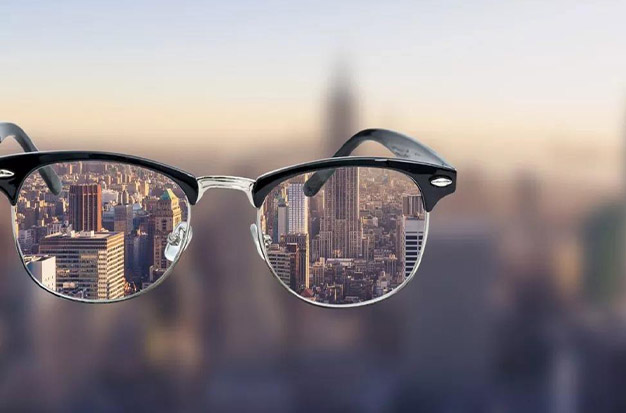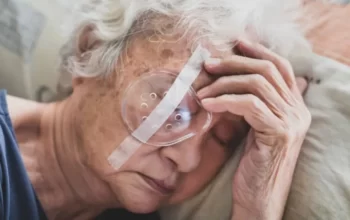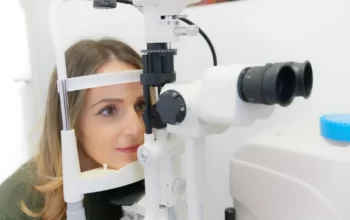
According to the American Academy of Ophthalmology, myopia affects more than 34 million Americans over the age of 40. High myopia, or extreme myopia, is a condition that can cause serious vision issues. Continue reading to find out more about high myopia, including what it is and how to treat it.
What Is Myopia?
Nearsightedness, or myopia, makes it difficult for a person to see objects in the distance but allows them to see things up close clearly. For instance, a nearsighted person might not be able to read highway signs until they are only a few feet away.
A sizeable portion of the population is afflicted by myopia. It is a condition that affects how the eyes focus that is easily treated with eyeglasses, contact lenses, or surgery.
How Common Is Myopia?
Myopia is quite typical. Over 40% of Americans are myopic, and this percentage is rising quickly, particularly among school-age children, according to the American Optometric Association. In the upcoming decades, eye specialists predict that this trend will continue.
A child with some degree of nearsightedness is now the responsibility of one in four parents. Some eye doctors think that if your child spends a lot of time doing “near” activities like reading or using a computer or smartphone, it could increase their risk of developing myopia.
What Is High Myopia?
A refractive flaw or visual focusing error is myopia. Long distance vision is challenging because images are focused on the retina rather than in front of it. High myopia is a term used to describe visual errors that are greater than eight dioptres. A higher propensity to develop some eye conditions results from high myopia, which affects about 2% of the population. These conditions include:
- Retinal detachment
- Degeneration of the central retina caused by atrophic patches
- Growth of blood vessels beneath the retina in the macular area
- Myopic macular hole
- Separation of the layers of the macular retina (schisis)
Patients’ quality of life is directly impacted by these conditions, especially if they are of working age and suffer from significant visual impairment.
What Causes High Myopia?
Nearsightedness is primarily brought on by a slightly elongated eyeball shape. Light concentrates too far in front of the retina when the eyeball is too long. Due to this, distant objects appear blurry.
The shape of the eyeball is longer in people with high myopia than in those with low or mild myopia. As a result, light concentrates even farther from their retinas, severely blurring their ability to see distance.
The development of high myopia may be influenced by inherited genes. When one or both parents are nearsighted, the likelihood that their child will also be nearsighted increases.
Rarely does severe myopia result in vision loss on its own. In contrast, as the eyeball lengthens, the retina and other eye tissues are stretched and become thinner. Their susceptibility to harm and disease is increased as a result.
According to studies, a person’s risk for these complications dramatically rises as their myopia worsens:
- Glaucoma (3x higher risk)
- Cataracts (4.5x higher risk)
- Retinal detachment (12.62x higher risk)
- Myopic macular degeneration or myopic maculopathy (845x higher risk)
People with high myopia are also at an increased risk of developing pathological myopia.
Malignant or degenerative myopia, also known as pathological myopia, is less common than low or high myopia. Just 3% of the global population are impacted by it. Yet, it ranks as the seventh most common cause of legal blindness in the country. Progress and vision loss can happen quickly and severely in pathological myopia.
People with high myopia must undergo regular dilated eye examinations. Their ophthalmologists need to keep an eye out for any complications brought on by high myopia.
Ask your eye doctor about the myopia control options in your area if your child’s myopia is getting worse. Controlling myopia can slow or stop the development of nearsightedness.

How Does High Myopia Develop?
When the eyeball lengthens, myopia develops. It may, however, also be present if the cornea is overly curved or if the two factors are combined. Because of this distortion, light rays will focus in front of the retina rather than on its surface. As a result, although they will typically be able to read and focus on things close to them, affected patients will struggle to focus on distant objects.
Heredity has a significant impact on high myopia in particular. You have a higher likelihood of developing myopia of a similar degree if one or both of your parents are nearsighted. The development of high myopia typically starts in childhood, though it may progressively get worse over time. Even after you reach your late teens and early 20s, your eyesight can still worsen.
Treatment
In principle, there is no specific treatment for high myopia and, in any case, an individual assessment of each patient should be made to establish the guidelines to be followed.
Blurred vision, or refractive error, can be corrected by the use of contact lenses and/or correction with glasses. Also, vision correction can be performed by undergoing refractive surgery for myopia with LASIK laser.
There is also the possibility of implanting intraocular lenses (ICL type phakic lenses), which consists of implanting a lens between the iris and the crystalline lens. The cornea is kept in its natural state by using this reversible procedure.
The procedure to correct myopia is done as an outpatient procedure, so the patient is not kept in the hospital.
Prevention
Until recently, there was no effective method to slow the progression of myopia. Recently, studies in children have shown that orthokeratology and treatment with low-dose atropine eye drops are the only treatments that succeed in slowing its progression.
On the other hand, the resulting complications can also be treated. A good ophthalmologic follow-up is crucial.
That is to say, vision controls should be performed periodically to facilitate the diagnosis and treatment of visual disorders associated with high myopia. We can reduce vision loss if these complications are detected early.
Similarly, it’s crucial to keep in mind that refractive surgery only corrects vision—it does not stop the disorders linked to this pathology from emerging.
Conclusion
If it is not regularly checked and properly managed, high myopia can have a number of serious negative health effects. As a result, individuals with high myopia as well as parents and guardians who are concerned about their children’s potential struggles with extreme nearsightedness should get in touch with a trained eye care professional.
Depending on your requirements, your eye doctor might advise regular examinations to monitor the development of high myopia or corrective lenses and glasses to ensure proper vision. In order to avoid wearing bulky glasses or contact lenses all day long, patients may even want to discuss LASIK surgery with their doctors.



